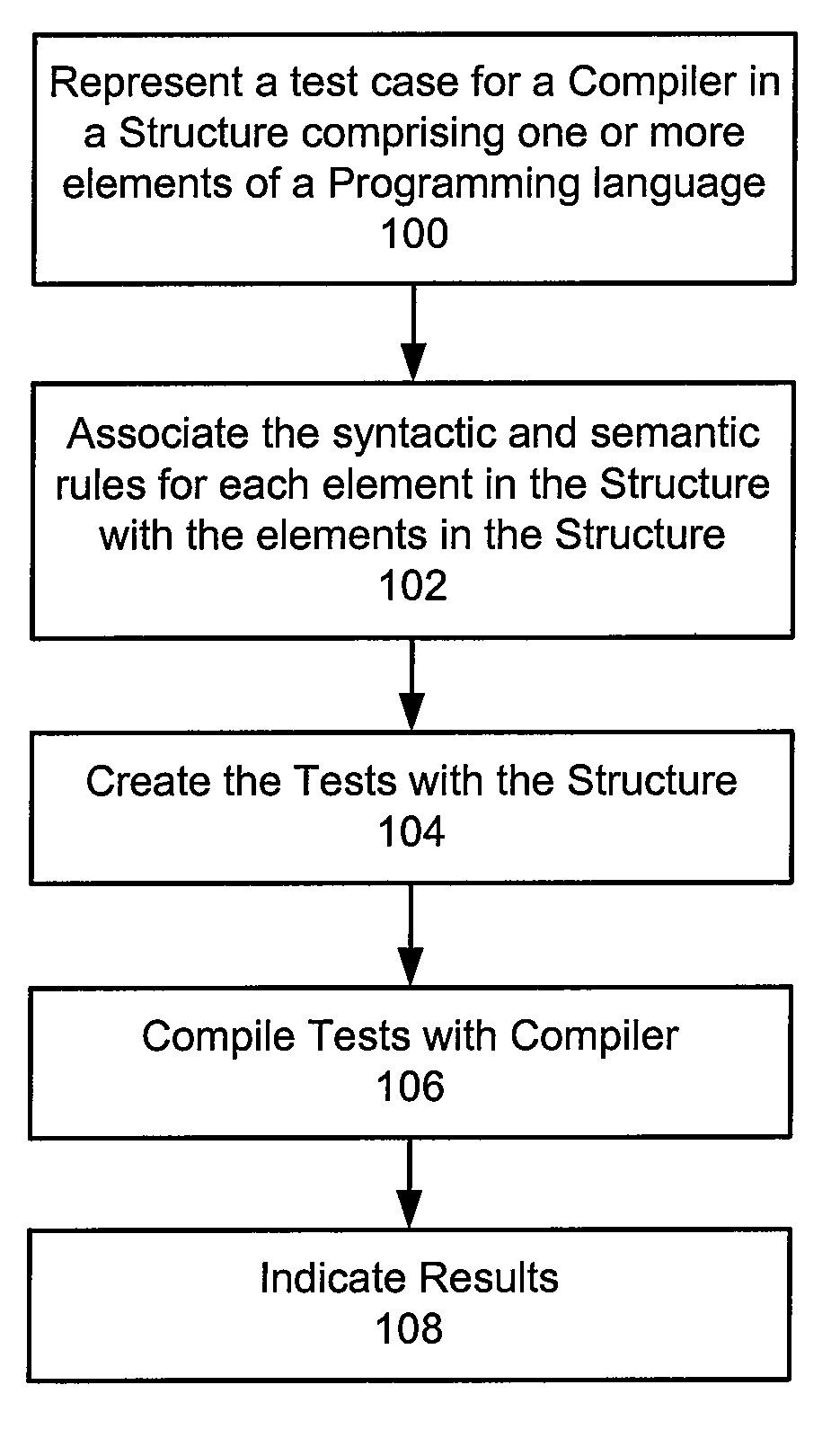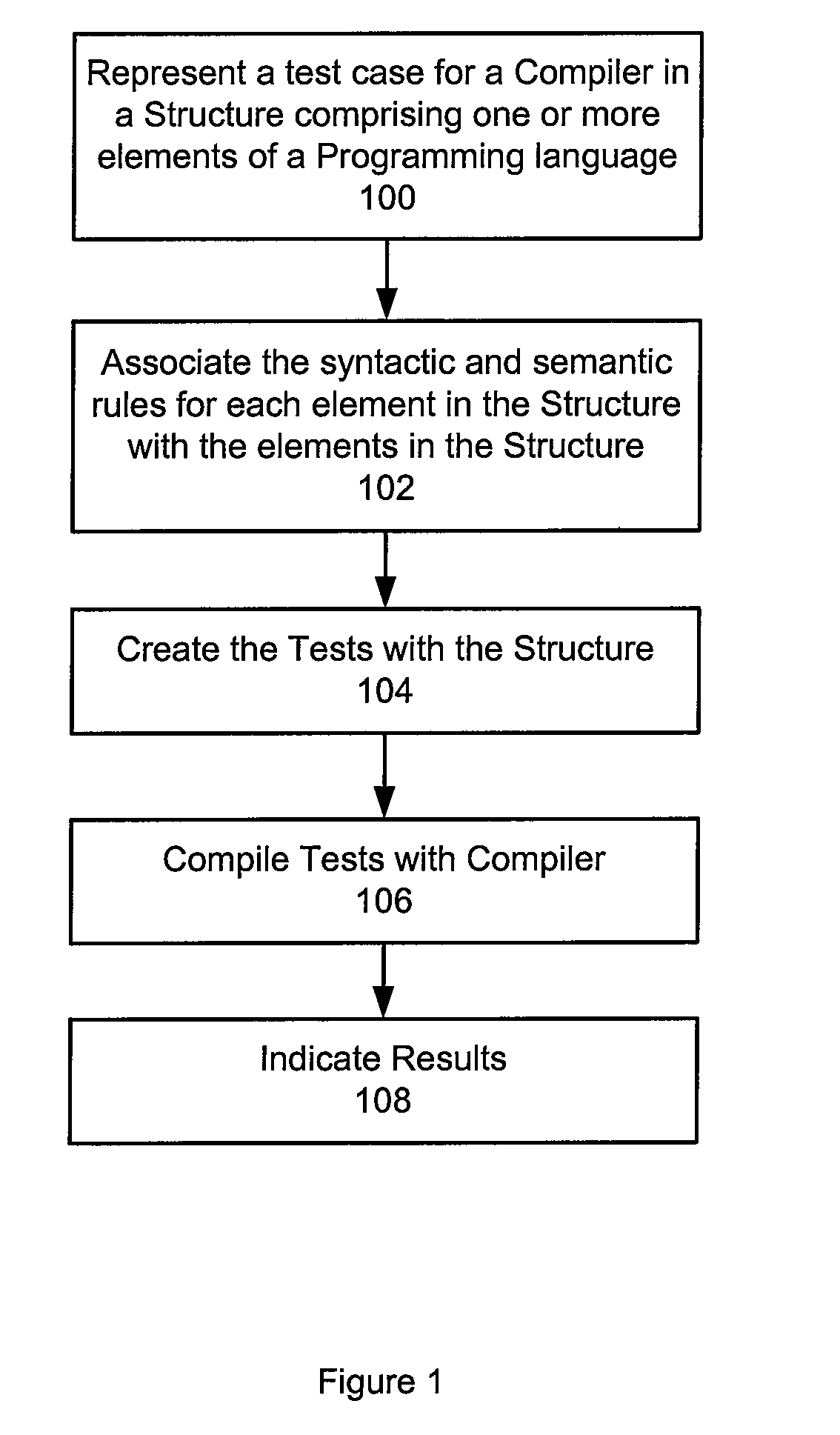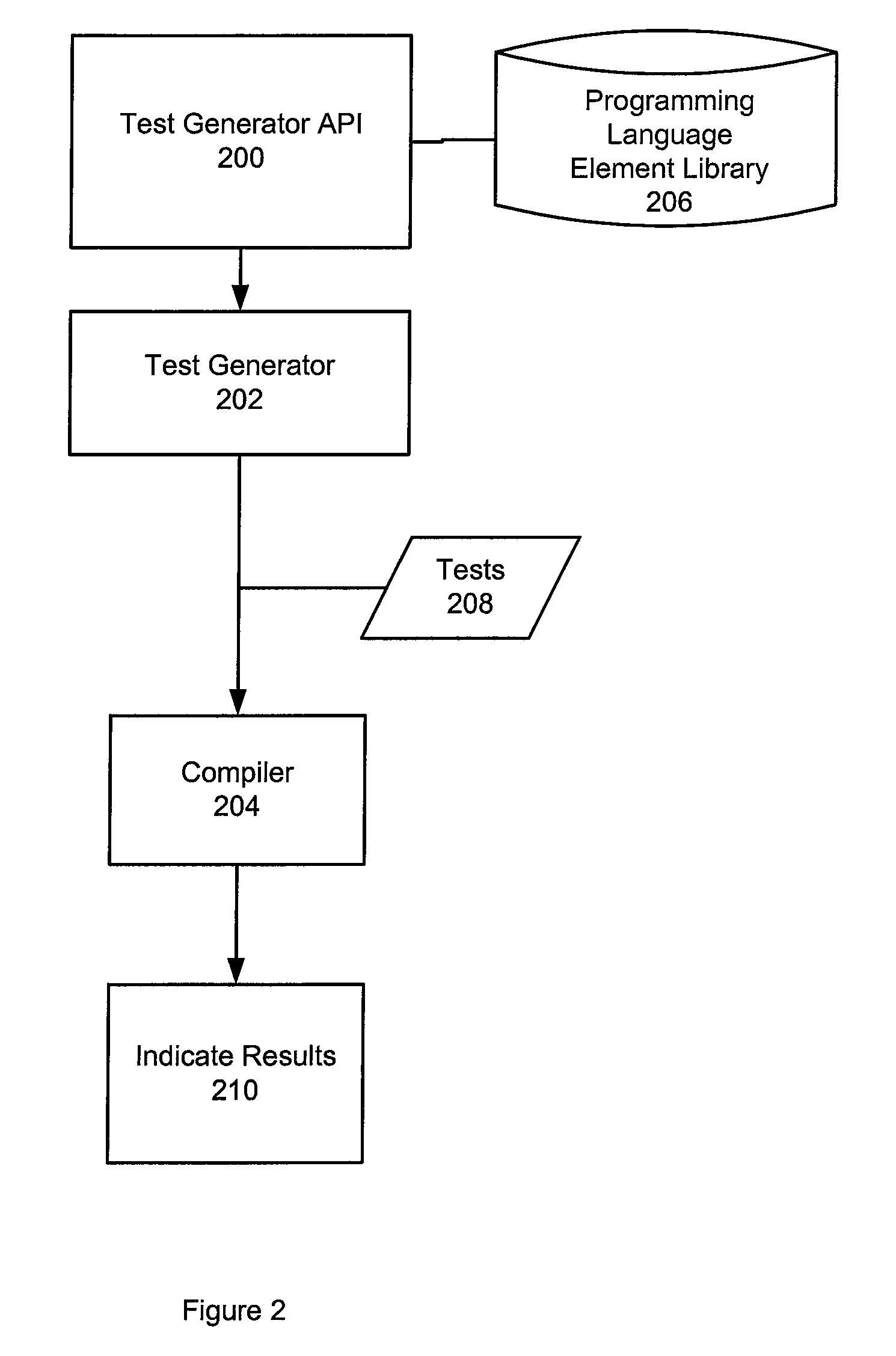Automation of software verification
a software verification and automatic technology, applied in the field of software verification, can solve the problems of insufficient verification of the compiler's ability to handle the syntax of a programming language alone, the inability to manually create a set of all possible inputs and permutations, and the inability to complete the verification of the compiler
- Summary
- Abstract
- Description
- Claims
- Application Information
AI Technical Summary
Benefits of technology
Problems solved by technology
Method used
Image
Examples
Embodiment Construction
[0018]The present invention is directed toward methods, systems, and computer program products for automatic generation of compiler tests.
[0019]Embodiments of the present invention implement automatic generation of compiler tests in order to verify the compiler. A test for a compiler is a computer program, source code, or portion of a computer program written in the programming language supported by the compiler. The automatic test generator creates tests for a compiler with test-cases that cover the interesting semantic and syntactic scenarios supported by the programming language.
[0020]FIG. 1 is a flowchart for an implementation of an automatic test generator for a compiler. Initially, a test-case for a compiler is represented in a structure comprising one or more elements of a programming language (100). The programming language elements in the test-case may be randomly selected or the user may designate an aspect of the programming language that the user desires to test. The use...
PUM
 Login to View More
Login to View More Abstract
Description
Claims
Application Information
 Login to View More
Login to View More - R&D
- Intellectual Property
- Life Sciences
- Materials
- Tech Scout
- Unparalleled Data Quality
- Higher Quality Content
- 60% Fewer Hallucinations
Browse by: Latest US Patents, China's latest patents, Technical Efficacy Thesaurus, Application Domain, Technology Topic, Popular Technical Reports.
© 2025 PatSnap. All rights reserved.Legal|Privacy policy|Modern Slavery Act Transparency Statement|Sitemap|About US| Contact US: help@patsnap.com



